-
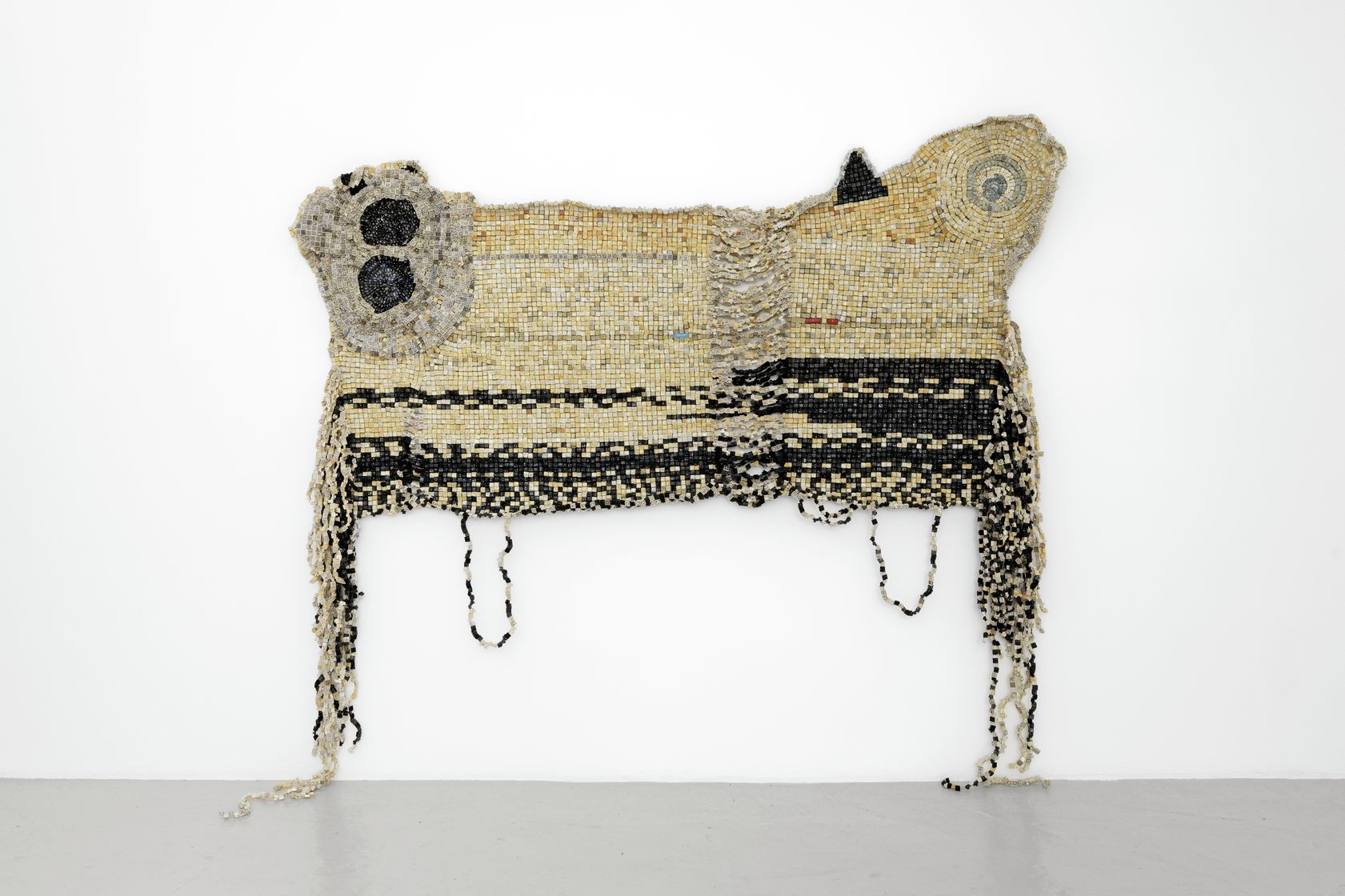 1/5
1/5
Moffat Takadiwa, The Bull
-
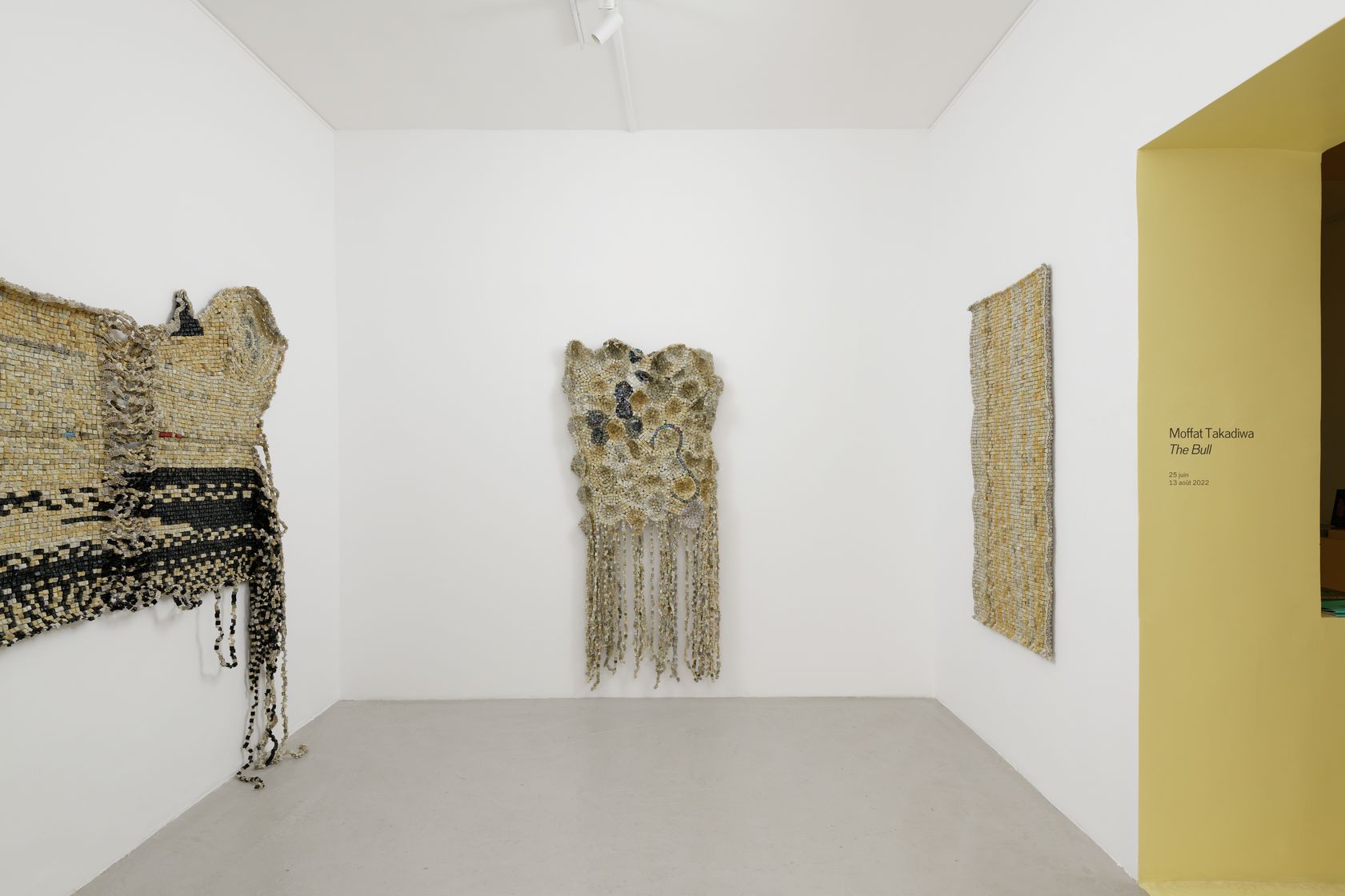 2/5
2/5
Moffat Takadiwa, The Bull
-
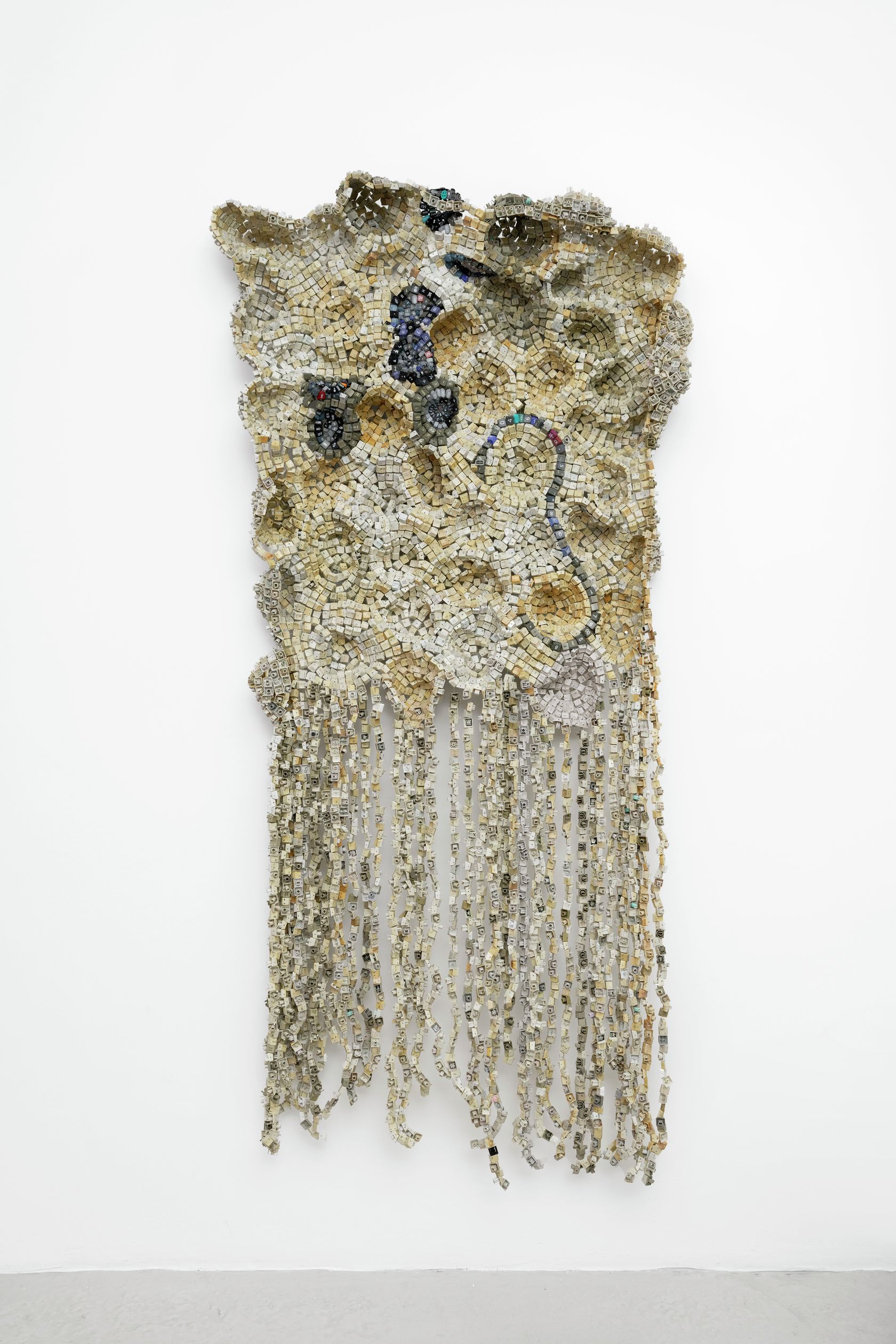 3/5
3/5
Moffat Takadiwa, The Bull
-
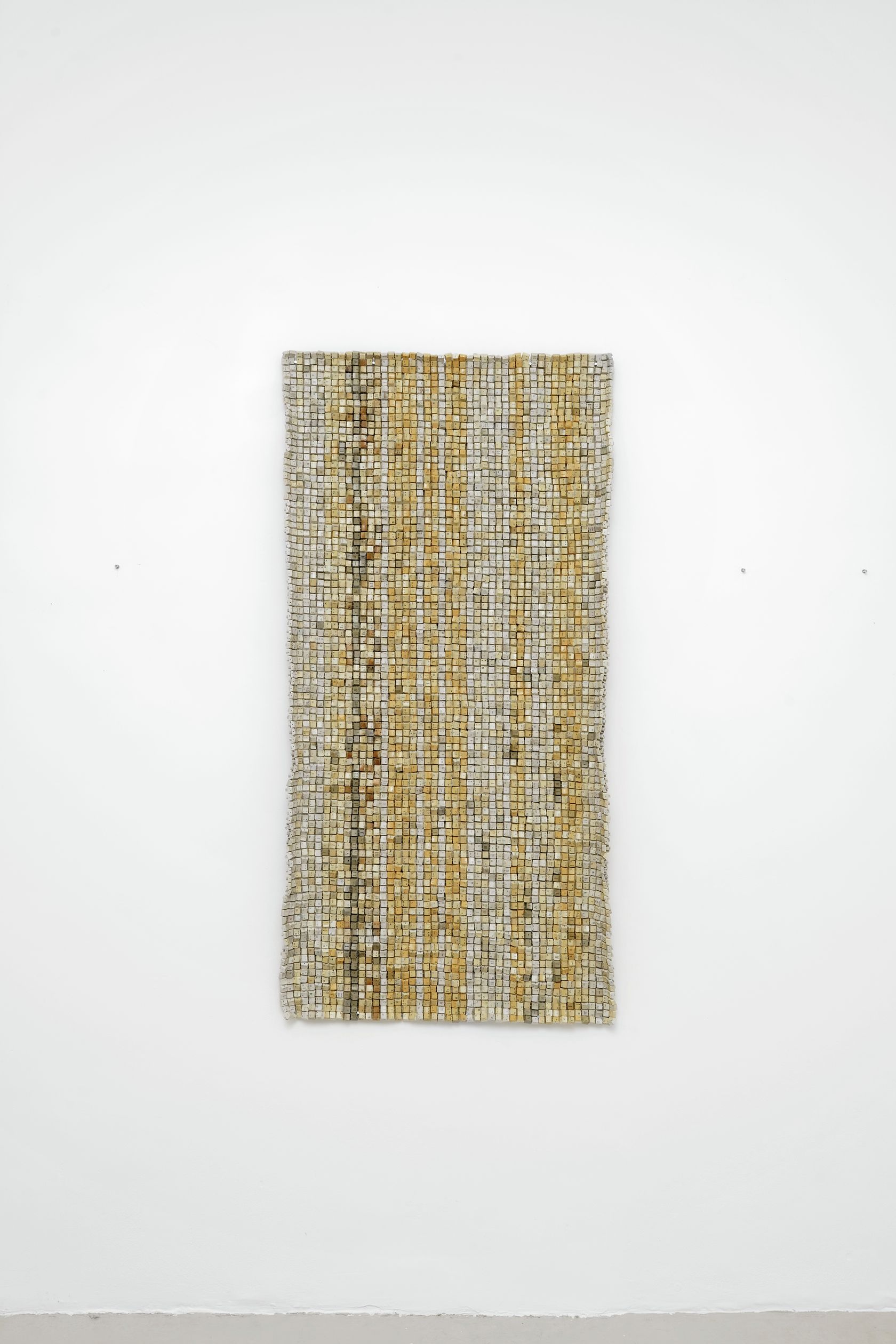 4/5
4/5
Moffat Takadiwa, The Bull
-
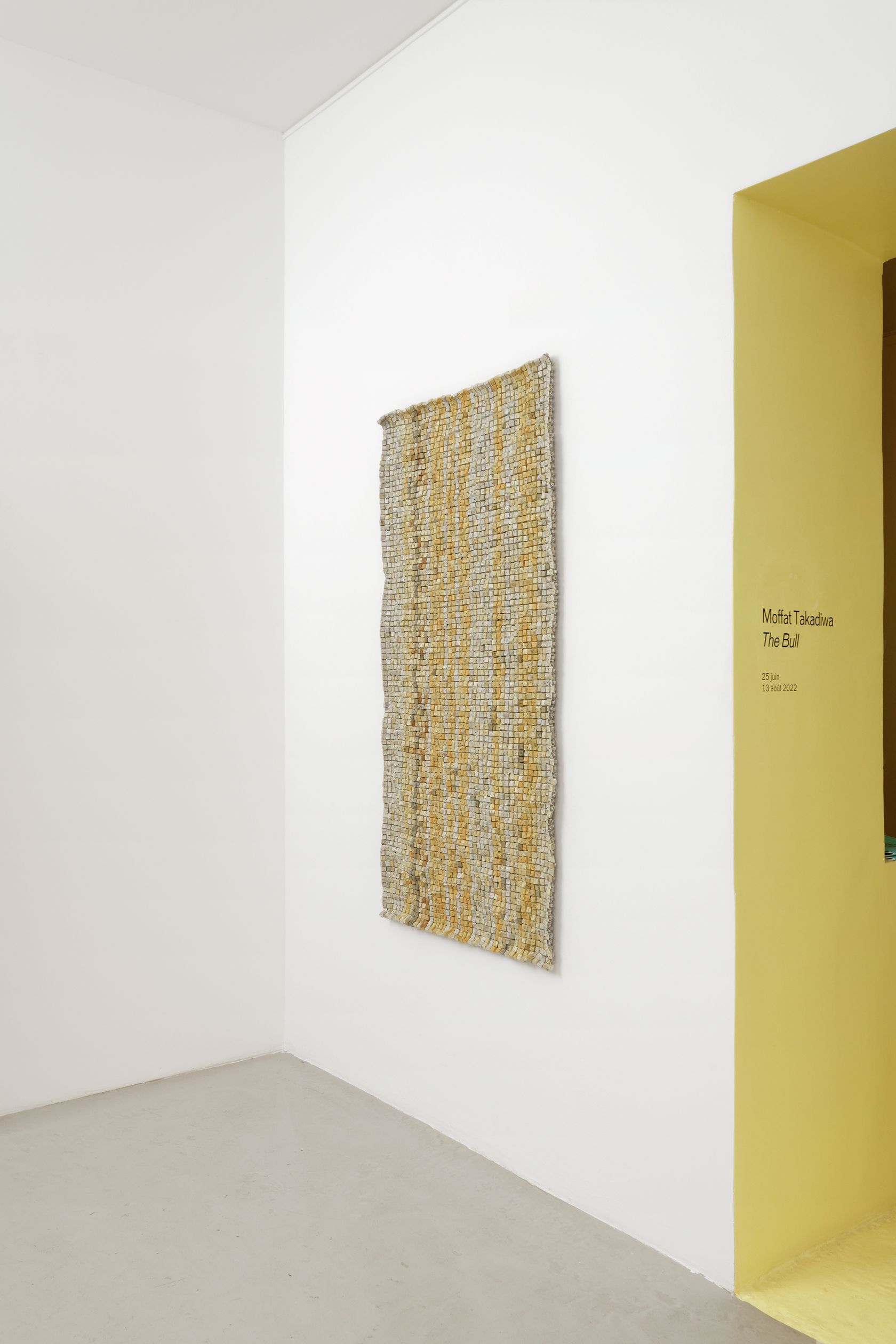 5/5
5/5
Moffat Takadiwa, The Bull
Semiose is delighted to be hosting three recent works by the artist Moffat Takadiwa in its Project Room.
Moffat Takadiwa’s works are created from waste collected from the garbage dumps of the Zimbabwean capital Harare that is then sorted, pierced and assembled into rich, layered hangings, which inevitably raise the burning issue of the exportation of Western refuse to the African continent. However, as the artist explains: “Of course the output of waste in the West and the neoliberal economic exploitation of the African continent are not small issues but they are many-faceted. The specific case of Zimbabwe is a little different, in that it is a landlocked country with no maritime borders, making it difficult to ship goods, raw materials and even garbage there. Unlike the countries that border the ocean and which receive shiploads of garbage, Zimbabwe tends to import a lot of second-hand goods from Western countries, particularly industrial products that can be reconditioned or repurposed.” 1 Thus the transformation process in Moffat Takadiwa’s oeuvre does not only raise geopolitical issues, but has many social, political and even spiritual implications. “As a matter of fact, I collect items at a kind of halfway point between their past and future uses. They were not shipped simply to be dumped and act as a catalyst for more complex processes and exchanges than simple waste. […] The dumping grounds have formed their own ecosystem, and despite the problems of toxicity, they can be places concerned with a redefinition of the value of things, their position in society and even the landscape itself.”
The Mbare neighborhood, where the artist sources his materials, is very important to his work “with its practice of informal crafts and the related trade, and where infrastructural elements and even the bags containing goods can take on their own lives.” However, Takadiwa also states that he is “perhaps more influenced by the social and psychological phenomena of added value and open-ended exchange than the place itself.” Recently, he has reoriented his inspiration towards Tengwe, where he’s actually from and where he spent his childhood. Many of his latest works are directly inspired by topographical views of Tengwe’s tobacco fields and the circular and rounded shapes invading his compositions are an evocation of those landscapes.
Moffat Takadiwa regularly returns to the idea that the materials he uses were originally everyday consumer commodities produced in the West, and that in this respect his oeuvre is shot through with the residues of post-colonial society. This is particularly evident in his use of computer keyboard keys with their English letters, which he weaves together to create new associations, deconstructing the authority of language and producing a kind of “Broken English” that reflects the conflicts and trauma of colonial domination. The Shona language spoken in Zimbabwe today has little in common with the original language. It is a combination of five or more different indigenous languages, a European construct resulting from the colonial strategy of division that took advantage of the amalgamation of various “tribes,” who would later come into conflict with each other.
The whole exercise of knotting and intertwining of the fishing line that runs through every element of the sculptures, at the micro-level of construction and consolidation, requires a very high level of physical and mental skill. “I can easily imagine myself and my different assistants as craftspeople.” Moffat Takadiwa concedes. In her essay concerning Takadiwa, Holly Jerger (exhibition curator at the Los Angeles Craft Contemporary) focuses on the question of craft and its origins. She reminds us that the discourse around crafts in the United States tends to revere the Arts and Crafts movement of the late 19th century and the post-war Studio Craft movement, using them as starting points for the development of contemporary craft. These Eurocentric discussions fail to recognize hundreds of years of craft production from outside of Europe, as well as the fact that most of the materials involved in the history of Western crafts, such as cotton and indigo, were only available because of Western colonialism and labor of slaves. In continually posing the question Which Craft? it is possible to dismantle the idea of craft as a Eurocentric monolith and to recognize the multiple traditions and histories that form what we recognise as craft. Moffat Takadiwa’s oeuvre justifiably allows such renewed discourse to flourish.
Concerning the idea of a community being formed around his studio, Takadiwa points out: “There is above all a sense of joy as to how the collective process brings us together, over and above the fact that the processes involve very different groups of people: those who join us simply for a question of income and those who are more involved artistically. In the end, they all contribute to the work on the same level and with the same commitment, whether in a more physical or mental way. They constitute an incredible workforce, adding great value to a basic product. It’s a question of collective empowerment and pervades every layer of my work. The multiple hands that contribute to the “weaving” of my works are symbols of this know-how and the related community at the core of my approach.”
No portrait of Moffat Takadiwa would be complete without mentioning his priceless and unselfish commitment to the wider community in Mbare through the Mbare Art Space, to which he actively contributes. It is a neighbourhood project dedicated to the arts as well as a creative social hub, “which has the intention of empowering the people with a cultural tool adapted to their needs and a really wide range of artistic practices and media including music, theatre, visual arts, graphic design, applied arts etc. Taking our history into account, its objective is to work towards the rehabilitation of local culture and at the same time help emerging talents. For me, that means working both as a kind of open-source museum as well as a creative platform.”
1. All the quotes from Moffat Takadiwa are taken from a conversation with Morad Montazami, which was published alongside the essay by Holly Jerger, mentioned later in the text, in Pleased to Meet You: Moffat Takadiwa, Semiose Editions, January 2022.